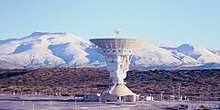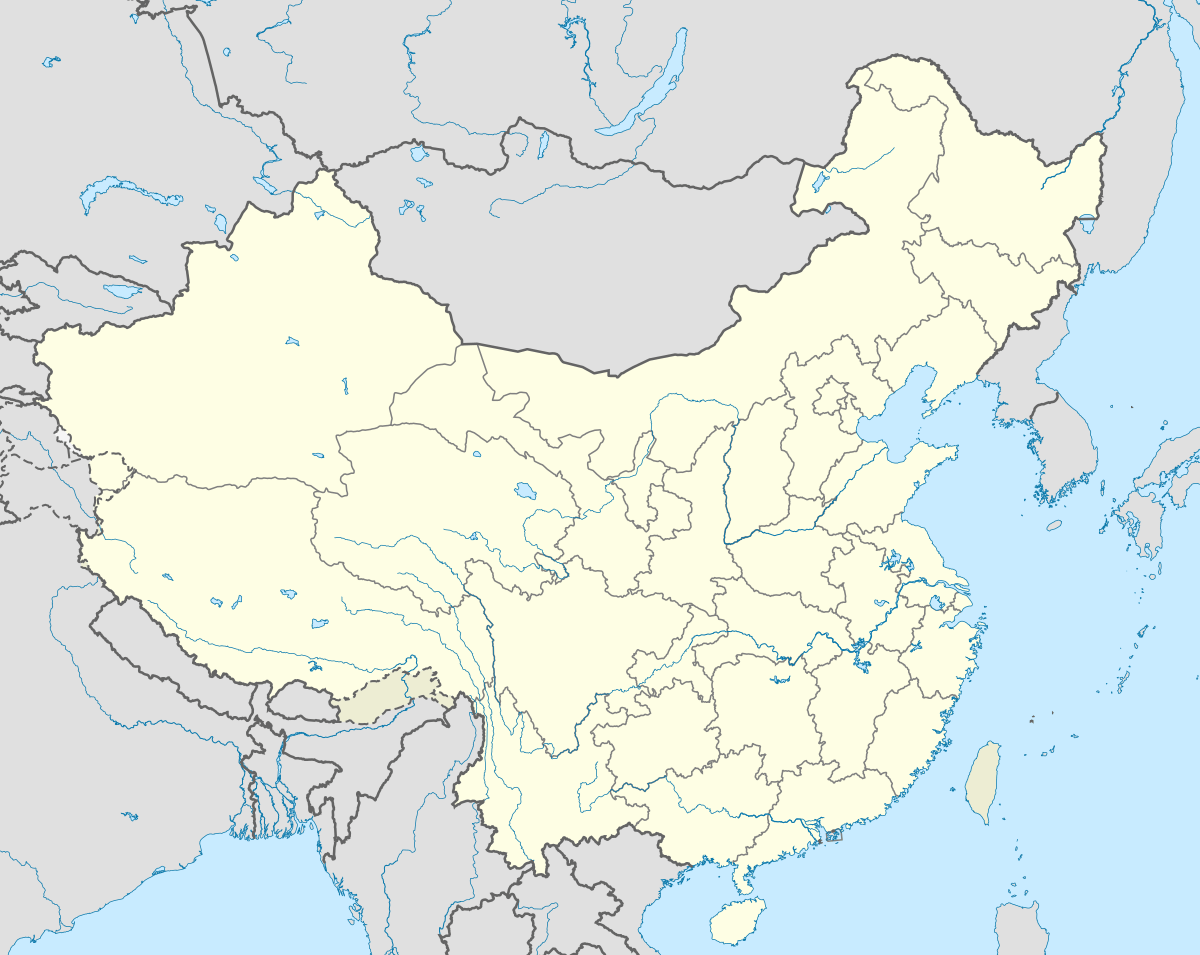Chinese Deep Space Network
The Chinese Deep Space Network is a network of large antennas and communication facilities that supports the lunar and interplanetary spacecraft missions of China. It is managed by the China Satellite Launch and Tracking Control General (CLTC).[1][2]


The network was first needed for the lunar mission Chang'e 1,[3][4] but will be used to support future missions to the moon and Mars. Similar networks are run by the USA, Russia, European countries, Japan, and India.
Network
As of 2007, the network consisted of:
- Ground control stations in Kashgar and Qingdao (in the Shandong province).
- 18 meter antennas in Qingdao and Kashgar
- A 50-meter antenna at Miyun (~116°E), near Beijing.
- A 40-meter antenna in Yunnan (~101°E).
Planned improvements by 2012, to support Chang'e 3 and Chang'e 4, include:[5]
- Upgrades to the ground facilities at Kashgar and Qingdao, and a deep-space ground control station at Jiamusi.
- A new 35-meter antenna at the Kashgar station.
- A 64-meter antenna in Jiamusi. (~130°E)
As of 2017, China was constructing an additional ground station in South America, in the Neuquen province of Argentina (~70°W), with a 50 million-dollar investment. The facility, a part of Chinese Lunar Exploration Program.[6][7] It was inaugurated in October 2017.[8] The station is seen by some as a symbol of China's increased role in South America's politics and economy.[9]
Uses
The network was used to track Chang'e 2, first to L2[10] and then to asteroid Toutatis.[11]
References
- http://www.nti.org/learn/facilities/124/ China Satellite Launch and Tracking Control General (CLTC)
- http://www.lanacion.com.ar/1725382-preocupa-el-eventual-uso-militar-de-una-estacion-china-en-neuquen Preocupa el eventual uso militar de un área espacial de China en el Sur
- Renjiang Xie (February 14, 2007). "Gearing up for Chang'e".
- Jianguo, Yan; Ping, Jing-Song; Li, Fei (13 July 2008). Precise orbit determination of Smart-1 and Chang'E-1. 37th COSPAR Scientific Assembly. Bibcode:2008cosp...37.1381J.
- The Ministry of Science and Technology, People's Republic of China (January 10, 2011). "CHINA SCIENCE AND TECHNOLOGY NEWSLETTER" (PDF). Archived from the original (PDF) on September 27, 2011. Retrieved June 21, 2011.
- http://news.xinhuanet.com/english/2015-06/30/c_134368151.htm Chinese space station is "for exclusively scientific and civilian purposes": Argentine gov't
- Victor Robert Lee (May 24, 2016). "China Builds Space-Monitoring Base in the Americas". Includes pictures and coordinates.
- Martín Dinatale (28 January 2018). "Tras la polémica por su eventual uso militar, la estación espacial de China en Neuquén ya empezó a funcionar" (in Spanish). Infobae. Retrieved 2 June 2018.
- "From a Space Station in Argentina, China Expands Its Reach in Latin America". New York Times. 28 July 2018.
- "China's second moon orbiter Chang'e-2 sends data from 1.7 mln km away".
- Bill Gray (25 Aug 2012). "Chang'e 2: The Full Story". Archived from the original on 2012-08-26.